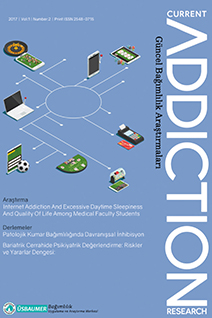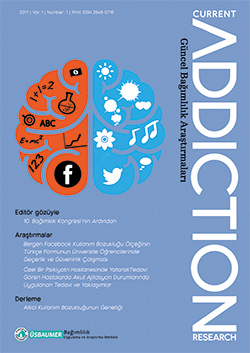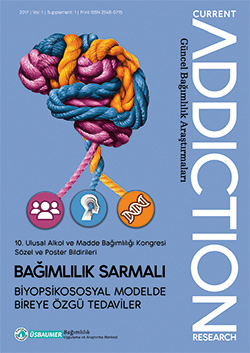Years
2023
2022
2021
2020
2019
2018
2017
Categories
Authors
- Ahmet Tamer AKER (1)
- Ahmet Yılmaz (1)
- Ahmet Üzer (1)
- Ali Yasin Kafes (1)
- Ali Yücel GÜLER (1)
- Alptekin ÇETİN (1)
- Alptekin Çetin (1)
- Altunışık Toplu Sibel (1)
- Aslı Enez Darçın (1)
- Aslı Zeynep Başabak Bhais (1)
- Aslıhan Polat (1)
- Aybüke Kaplan (1)
- Ayşegül Tosuner (1)
- Beyza Yaz (1)
- Birgul Kekliltepe (1)
- Birgül CUMURCU Hatice (1)
- Birgül Cumurcu Hatice (1)
- Bolat Kaya Özlem (1)
- Bülent COŞKUN (1)
- Caner ASLAN (1)
- Cemal Onur Noyan (4)
- Cihat Paltun Salih (1)
- Deniz Doğan (1)
- Deniz Eryılmaz (1)
- Derya Gündüz Hoşgör (1)
- Duygu KILIÇ ÖZTAN (1)
- Elif Mutlu (1)
- Erkal ERZİNCAN (1)
- Erkal Erzincan (2)
- Erol Göka (1)
- Fagan Zakirov (1)
- Fatma Betül Esen (1)
- Fatma Eren (2)
- Feyza ÇELİK (1)
- Filiz Özsoy (1)
- Gul Eryılmaz (1)
- Gökben Hızlı Sayar (3)
- Gül ERYILMAZ (3)
- Gül Eryılmaz (2)
- Gürler GÜZ (1)
- Gürler Güz (1)
- Habib Erensoy (1)
- Hasan Kaya (4)
- Hasan Mervan Aytaç (1)
- Hatice Turan (2)
- Hatice Özyıldız Güz (1)
- Haydar Hoşgör (1)
- Hüseyin Ünübol (2)
- Hızlı Sayar Gökben (1)
- Işıl Gogcegoz (2)
- Işıl GÖĞCEGÖZ (1)
- Işıl Göğcegöz (2)
- Lütfiye Nur Akkoç Arabacı (1)
- Meryem Zeynep Uğurlu (1)
- Mustafa AKAN (1)
- Mustafa Akan (1)
- Müberra Kulu (1)
- Nermin GÜNDÜZ (2)
- Nermin Gündüz (2)
- Nesrin Dilbaz (5)
- Nevzat Tarhan (1)
- Nilüfer SAATCİOĞLU TINKIR (2)
- Nisanur Sarıgül (1)
- Nuran Korkmaz (1)
- Onur Gökçen (1)
- Rüstem Mustafaoğlu (1)
- Salih Cihat Paltun (1)
- Sedef KOÇ BAL (1)
- Selami Ülker (1)
- Sema AKKOYUN (1)
- Serdar Nurmedov (2)
- Sever Yıldırım (1)
- Simge ALEVSAÇANLAR CÜCÜ (1)
- Sümeyra Bilgiç (1)
- Tijen ŞENGEZER (1)
- Tijen Şengezer (1)
- Tonguç Demir Berkol (1)
- Türker Tekin Ergüzel (1)
- Yasin Hasan Balcıoğlu (1)
- Zakirov Fagan (1)
- Zehra Arıkan (1)
- Zeynep Ülke (1)
- Zeynep Şahin (1)
- Çağrı Yalçın Çınar (1)
- Çelik Hüseyin (1)
- Çetin Alptekin (1)
- Özge Timur (1)
- Özlem Bolat Kaya (1)
- Şafak Yalçın Şahiner (1)
ARTICLES
Original Article
Comparison of the Attachment Styles of Cigarette Smokers and Nonsmokers
Beyza Yaz,Hüseyin Ünübol,Gökben Hızlı Sayar
2019, 3(1), s:11-15
Aim: This study aimed to compare the attachment styles of smokers and nonsmokers.
Methods: 2800 individuals who participated in the study were given sociodemographic form and “Experiences in Close Relationships Scale”.
Results: Younger ages, male sex, low educational levels found to be related to smoking status. However smoking status or the number of daily smoked cigarettes not found to be related to attachment style.
Conclusion: According to the results of the study, attachment styles were not significantly different according to smoking status. The results of this study suggest that the other comorbid psychopathologies might be a more important risk factor than attachment style in smoking.
Original Article
Haydar Hoşgör,Derya Gündüz Hoşgör
2019, 3(1), s:16-24
Objective: The aim of this study is to examine the effect of the fear of missing out on the nomophobia, and to determine whether differences between these variables and demographic features.
Method: In accordance with this purpose, the students who were studying at the Department of Health Management in 2017-2018 autumn semester at universities in Istanbul were included in this study and data of 273 respondent were evaluated. Personal information form and FoMO and Nomophobia scales were used for data collection. Descriptive statistics, t-test, correlation and regression analyses were used in the data analysis.
Results: According to the analysis outcomes, the levels of nomophobia and FoMO of the students are above average. The results of the study demonstrate that there is a significant relation at a moderate level and positive direct relationship between nomophobia and fear of missing out, as well as the fear of missing out explains 30% of nomophobia. Also, the results show that there are statistically significant differences between students’ levels of nomophobia and fear of missing out, and their demographic features. Moreover, these differences are stem from students who control his smartphone at least 33 times a day, carry a continuous charger, control his smartphone as soon as waking up, connect to the social media via the smartphone.
Conclusion: It has been concluded that for future healthcare manager candidates, the fear of missing out on social networks is a predictor of nomophobia, also known as the fear of being deprived of the smartphone.
Review Article
Sever Yıldırım,Türker Tekin Ergüzel,Gökben Hızlı Sayar
2019, 3(1), s:25-30
Nowadays most of the young generation use internet intensively. These individuals are constantly online thanks to their smart phones. Since internet has a usage area that is so wide and smart phones give their users very easy access to it, many people feel desire to use smart phones. Smart phones come in many different price ranges and they are accessible for every consumer type. Many advertisements are being made to spread internet usage and make it a regular thing of everyday life. Also, smart phone companies produce more affordable phones. Smart phones make possible many useful tasks on internet for their users, such as; banking transactions, grocery shopping, watching movies and reading newspapers. Smart phones make everyday life easier and they make computer tasks without the need of using a computer; which also saves time. Purpose of this review is to overview the current situation about smart phone addiction and discuss the causes and results of this addiction.
Review Article
Sociology of Consumption: A Study on Technology Addiction
Aybüke Kaplan
2019, 3(1), s:31-41
Technological development and diversification of products offered to the consumer and make them attractive cause some problems. The main reason for these problems is the inability to control the product life. Uncontrolled use of technology leads to many behavioral addictions. Technology addiction, which is accepted as a sub-dimension in behavioral addiction, is a prominent problem in this process. It has been found that people’s increasing dependence on technology changes individuals identity and, moreover, their consumption preferences. In adolescence, more dominant individuals can express themselves while expressing materialist attitude. Therefore, it is thought that the way individuals express themselves in the community is indexed to the goods they consume. For example, the element that is the main determinant of many personal oriented preference perceptions, such as the preferred phone brand and the features of the computer, is focused on what the individual consumes or adopts. In this article, the reason of the intense demand of individuals for the need created for media and communication tools and technological products is explained. In addition, technology dependence is examined from a sociological point of view in this context in which ostentatious consumption manifests itself today.
Original Article
Ayşegül Tosuner,Zehra Arıkan
2018, 2(2), s:39-46
Objective: To identify the prevalence of violence in alcohol and drug abusers and a control group; to determine the relationship between violent behavior and impulsivity, anger, aggression, traumatic childhood experiences and indicate whether prevalence of violence differs between periods of deprivation, soberness and while under the influence of alcohol/drugs.
Method: 49 alcohol abusers and 31 drug abusers aged 15-65 years were compared among themselves and also with 62 healthy controls; using a questionnaire including questions related with sociodemographic characteristics of violence, the Buss-Perry Aggression Scale, Barratt Impulsivity Scale, the State-Trait Anger Scale, the Childhood Trauma Questionnaire, Hamilton Depression Scale, the State-Trait Anxiety Inventory.
Results: The prevalence of psychological violence was 85%, physical violence 54%, sexual violence 6% and economic violence 10%. Significant differences were found in most of the variables among the groups, which were thought to be related to violent behavior.
Conclusion: In addition to medical treatment for addiction, psychotherapeutic interventions focusing on personality traits in areas such as anger control and impulsivity should be adopted. The fact that violence decreases in sober periods indicates that violence is rather a result of the nature of the substance.
Original Article
Predictors for Fear of Missing Out in the Social Networks Among University Students
Çağrı Yalçın Çınar,Elif Mutlu
2018, 2(2), s:47-53
Objective: Social networks have become indispensable of our lives with the spread of the internet. The increase of time spent on social networks led to appear a new consept of fear of missing out. The purpose of this research was to determine predictors for Fear of Missing Out (FoMO) among university students.
Method: The sample of the research was 400 Kırklareli university students who were determined by random sampling method. The data was collected using personal information form, Life Satisfaction Scale, BAPI Internet Form, FoMO Scale, Rosenberg Self-Esteem Scale, Five Factor Personality Scale and Adult ADHD Self-Report Scale. SPSS Statistical Software package was used in the analysis of the data.
Results: As a result of research, Fear of Missing Out was found to be higher among students who also find lessons boring and check social media hourly especially in during the course who have low self-esteemand in the first grade. Inaddition, it was determined that internet addiction,neurotic features, attention deficit and hyperactivity have positively associated with FoMO.
Conclusion:Internet addiction, impulsivity and neurotic features are determined as influential factors in the emergence of FoMO.
Review Article
Ali Yasin Kafes,Selami Ülker,Gökben Hızlı Sayar
2018, 2(2), s:54-58
Food addiction has become a subject of increasing interest recently, particularly in societies where the prevalence of obesity is increasing. In individuals consuming excessive carbohydrates, it is suggested that the behavior of consuming these foods is transformed into a kind of addiction, and it is reported that the attitudes observed in these individuals can be common with the basic symptoms that are constantly observed in substance addiction. The suggested dysfunction of reward system which proposed to be related with food addiction tried to be supported by clinical and experimental studies. In this review, food addiction will be defined, and clinical overlaps, probable etiologic factors and treatment options will be discussed.
Review Article
Gül Eryılmaz,Işıl Göğcegöz
2018, 2(2), s:59-61
Pathological gambling is a mental disorder characterized that might cause significant decrements in social, vocational and family life. In this report, addictive gambling behavior, which may be called secondary or iatrogenic, has been reviewed.
Case Report
Gambling Disorder Following Bariatric Surgery
Gül Eryılmaz,Cemal Onur Noyan
2018, 2(2), s:62-63
Pathological gambling is defined as persistent and repetitive gambling behaviors, characterized by the inability to control the gambling behavior of the individual, family or professional functionality. It is stated that the possibility of occurrence of alcohol and substance use disorders is increased after obesity operations, which have been frequently applied in recent years. Until now, gambling disorder, which is considered as impulse control disorder, is evaluated under the category of addiction behaviors with DSM-5. In this case report, the case of gambling disorder following bariatric surgery will be discussed.
Original Article
Evaluation of Memory Functions of Alcohol Dependent Patients
Serdar Nurmedov
2018, 2(1), s:5-10
Long-term alcohol use causes varying degrees of deficit in various cognitive functions including learning, memory, visuospatial functions and abstraction. Studies using different techniques indicate that the neocortex, particularly the frontal lobe; limbic system and cerebellum are the brain regions most vulnerable to the toxic effects of alcohol.
The aim of this study is to assess the memory function in individuals with a history of alcohol dependency who meet the criteria for at least early partial remission and to compare it with healthy controls. The study also aims to investigate the association of memory function with duration of abstinence.
Twenty-four patients and 24 age, sex and education matched healthy controls were included in the study. Patients with Axis-I comorbidity, chronic neurological disease, dementia, chronic disease, Wernicke encephalopathy, Korsakoff syndrome and history of head trauma were excluded. The memory function of alcohol dependent individuals and healthy controls was assessed with Wechsler Memory Scale (WMS) and Rey Auditory- Verbal Learning Test (AVLT).
The memory subscales that show significant difference between the dependent and control groups are immediate memory span, total scores of learning trials and learning false score in AVLT and forward digit span, backward digit span, visual reproduction and memory quotient in WMS. Statistically significant difference was found in the long term recall score and long term false recognition score between the early and sustained full remission subgroups.
As a result of this study, dependent subjects are found to show more deficit in attention and memory functions compared to healthy controls. These findings are consistent with the literature on this subject.



 2. Sayı
2. Sayı
 1. Sayı
1. Sayı
 Ek Sayı
Ek Sayı







